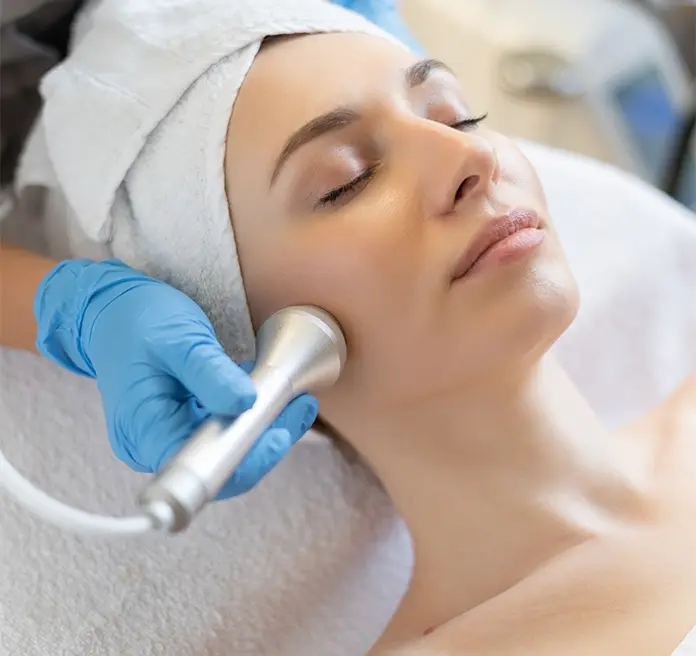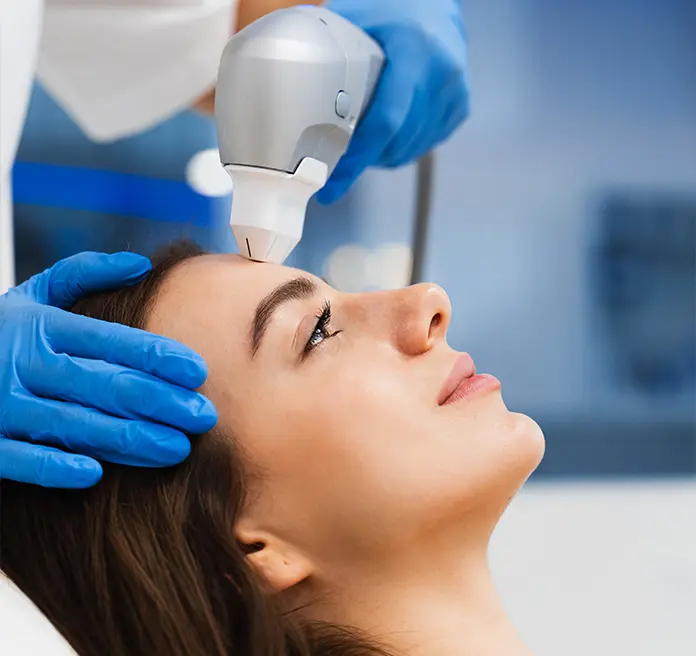Ultrasound Guided Filler Dissolving
$800
(includes enzymes)
(includes enzymes)
+ Filler Cost
Dermal fillers can effectively restore volume and reduce signs of aging, but their success depends entirely on precise placement. Traditional filler injections rely on skill alone, but even the most experienced providers can’t see beneath the skin. At Seattle Plastic Surgery, we offer a better solution: ultrasound-guided filler injections. This advanced technique uses real-time imaging to visualize your anatomy, ensuring proper placement, enhanced safety, and natural-looking results.
Ultrasound-guided filler uses a high-frequency probe to visualize facial anatomy in real time, allowing your provider to identify blood vessels, fat compartments, fascia, and any existing filler. Doppler imaging can assess blood flow to help avoid key vessels in higher-risk areas. This guidance supports both definite placement of new filler and targeted dissolving of existing filler by locating and characterizing deposits so hyaluronidase can be delivered exactly where needed. While not necessary for every treatment, ultrasound can add valuable insight for safer, more accurate results, especially in delicate or complex areas.


Ultrasound is not a replacement for skill or experience, it is an additional safety and planning tool. Many patients choose it for first‑time filler, treatment in higher‑risk zones, or when they have an existing product. Key advantages include:
Ultrasound imaging maps the facial anatomy in real time, ensuring filler is deposited exactly where needed, whether for volumizing cheeks, smoothing nasolabial folds, or refining the jawline.
By clearly visualizing blood vessels and soft tissue, the risk of vascular occlusion or filler misplacement is significantly minimized.
Accurate placement prevents overfilling and ensures even distribution, creating subtle yet impactful rejuvenation.
Most filler patients are candidates for ultrasound guidance, but it is beneficial for specific goals and circumstances. It is recommended when you:
If you are unsure whether you need an ultrasound, we will discuss the pros and cons during your consultation and tailor the approach to your goals.

We use ultrasound selectively where it adds value. In routine areas, a standard approach may be sufficient. In the following regions, ultrasound can help confirm anatomy, depth, and product placement:
We begin by clarifying your goals, reviewing your history, and deciding whether ultrasound will meaningfully improve planning. If we proceed with imaging, here is how the visit typically flows:
Most appointments take 30–60 minutes, depending on the number of areas treated.
Recovery is similar to standard filler treatments. Mild swelling, tenderness, or bruising may occur and typically improve within a few days. Most patients see near-final results in 1–2 weeks, with longevity depending on the filler type, treatment area, and individual metabolism. You’ll receive detailed aftercare instructions, and a follow-up visit may be scheduled to assess results and make any refinements.
Our experienced, physician-trained injectors combine advanced techniques with personalized care to deliver safe, natural-looking results. With multiple locations, convenient scheduling, and the option for ultrasound guidance when beneficial, we focus on providing precise treatments that align with your goals.
Call 206-561-9127 or click here to book your slot today, or book online to schedule your consultation and see how we can help you achieve your treatment goals.
It depends on the goal. Fillers restore volume and contour, while HIFU targets skin tightening by stimulating collagen. Many patients combine both for optimal results.
They feel similar to standard filler injections. Topical numbing or lidocaine in the filler helps minimize discomfort.
Hyaluronic acid fillers appear as distinct, hypoechoic (dark) areas on ultrasound, making it possible to locate and assess them accurately.
They allow the injector to visualize anatomy in real time, avoid critical structures, and place or dissolve filler with greater precision and safety.
Give us a call at 206-324-1120. Chat by clicking the icon in the lower left hand corner of your screen. Additionally, you can contact us by filling out the form above.